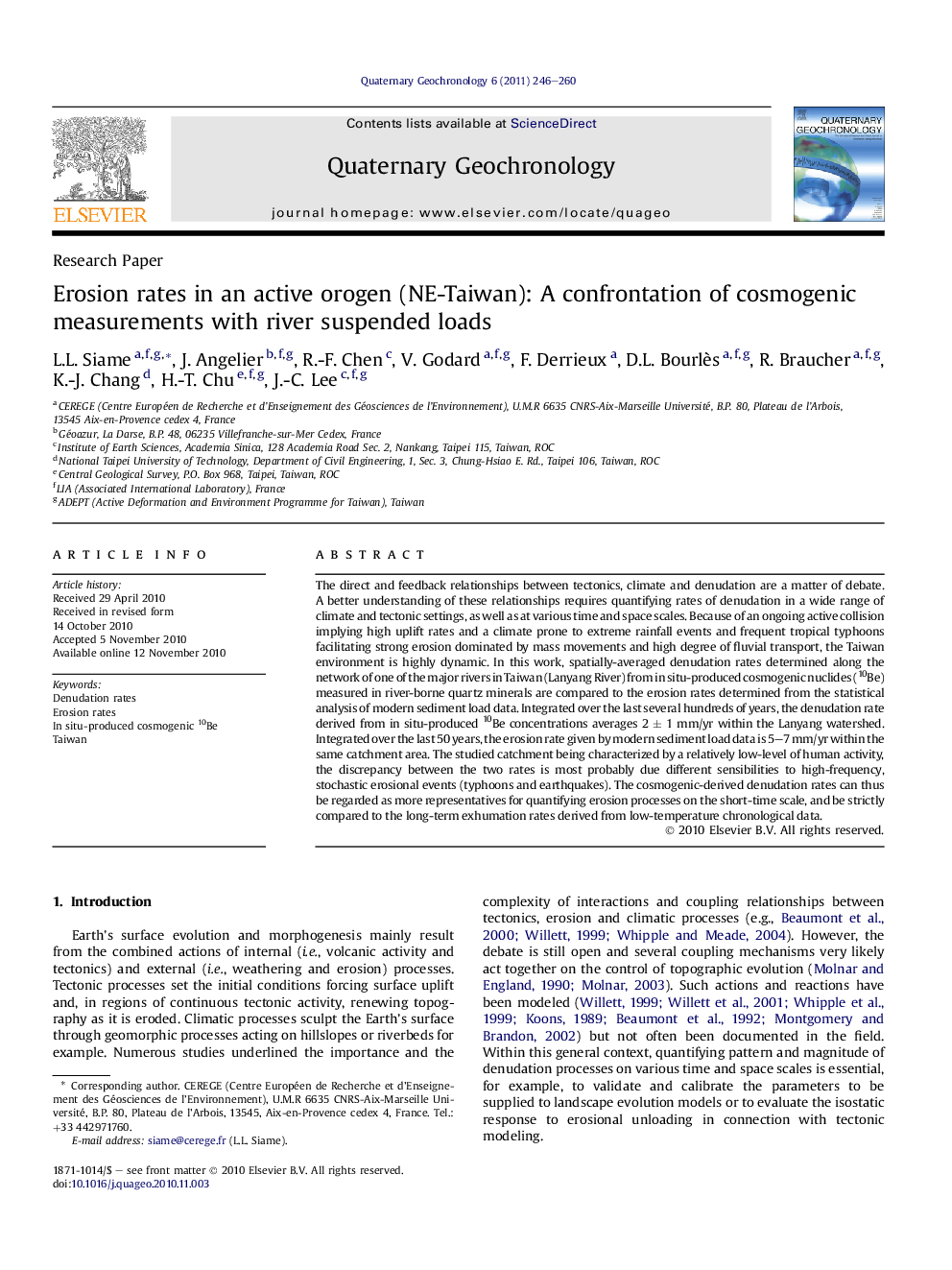| Article ID | Journal | Published Year | Pages | File Type |
|---|---|---|---|---|
| 4725364 | Quaternary Geochronology | 2011 | 15 Pages |
The direct and feedback relationships between tectonics, climate and denudation are a matter of debate. A better understanding of these relationships requires quantifying rates of denudation in a wide range of climate and tectonic settings, as well as at various time and space scales. Because of an ongoing active collision implying high uplift rates and a climate prone to extreme rainfall events and frequent tropical typhoons facilitating strong erosion dominated by mass movements and high degree of fluvial transport, the Taiwan environment is highly dynamic. In this work, spatially-averaged denudation rates determined along the network of one of the major rivers in Taiwan (Lanyang River) from in situ-produced cosmogenic nuclides (10Be) measured in river-borne quartz minerals are compared to the erosion rates determined from the statistical analysis of modern sediment load data. Integrated over the last several hundreds of years, the denudation rate derived from in situ-produced 10Be concentrations averages 2 ± 1 mm/yr within the Lanyang watershed. Integrated over the last 50 years, the erosion rate given by modern sediment load data is 5–7 mm/yr within the same catchment area. The studied catchment being characterized by a relatively low-level of human activity, the discrepancy between the two rates is most probably due different sensibilities to high-frequency, stochastic erosional events (typhoons and earthquakes). The cosmogenic-derived denudation rates can thus be regarded as more representatives for quantifying erosion processes on the short-time scale, and be strictly compared to the long-term exhumation rates derived from low-temperature chronological data.
